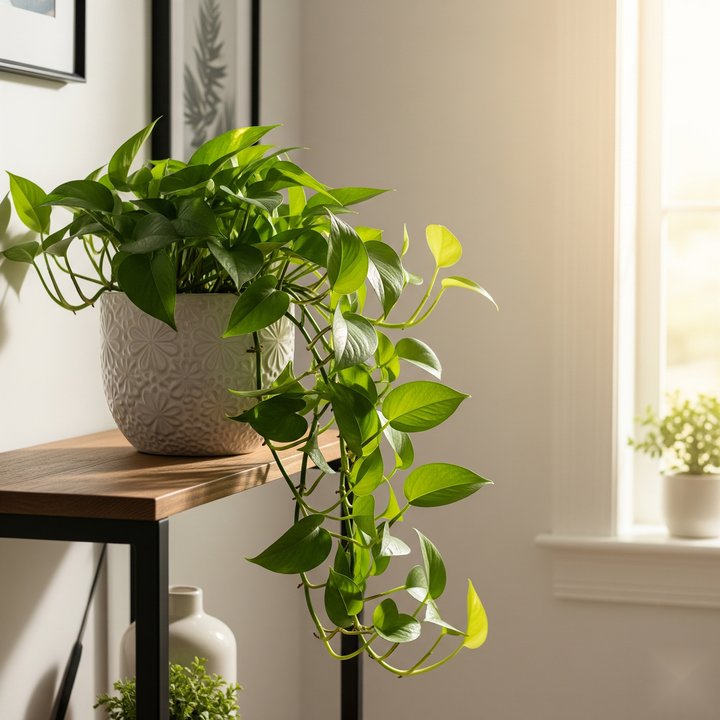If you’ve ever owned a pothos (Epipremnum aureum), you know how rewarding these trailing beauties can be. They’re tough, forgiving, and grow like crazy—especially when you give them the right fertilizer at the right time. But if you’re scratching your head wondering what kind of fertilizer to use, how often to apply it, or how to avoid burning your plant’s roots—don’t worry, you’re not alone.
Let’s dive in.
Why Pothos Need Fertilizer
Pothos are incredibly resilient plants, often called “devil’s ivy” because it’s so hard to kill. But even though they can survive with very little, they thrive with the right nutrition.
Think of fertilizer as vitamins for your plant. Your potting soil might start out rich, but over time, essential nutrients get used up or flushed out with watering. Fertilizer replaces those lost nutrients and helps your pothos grow faster, produce bigger leaves, and push out more vines.
Pothos especially benefit from nitrogen (for leaf growth), phosphorus (for root health), and potassium (for overall vigor). That’s why most pothos fertilizers are “balanced” blends like 10-10-10 or 20-20-20.
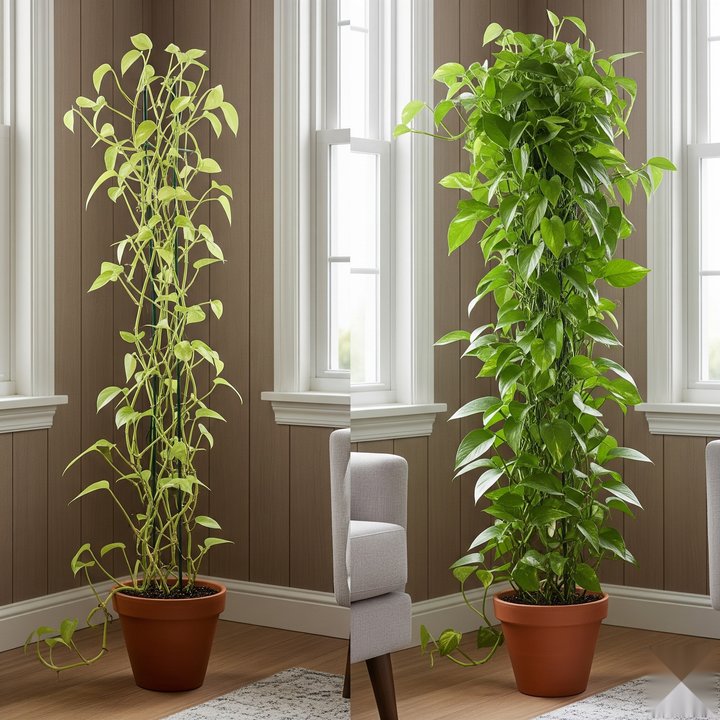
Best Types of Fertilizer for Pothos
Here are a few fertilizer options that work well for pothos:
- Liquid Fertilizer (Best for Beginners)
- Easy to measure and mix with water.
- Gives quick results.
- My go-to: Jack’s Classic All Purpose 20-20-20 or a basic houseplant fertilizer.
- Easy to measure and mix with water.
- Slow-Release Granules
- Mix into soil when repotting.
- Releases nutrients over several weeks.
- Great for busy plant parents.
- Mix into soil when repotting.
- Organic Fertilizers
- Include worm castings, fish emulsion, or compost tea.
- Gentler and eco-friendly.
- Slightly slower results, but healthier soil in the long run.
- Include worm castings, fish emulsion, or compost tea.
- Fertilizer Spikes
- Pre-measured and easy to insert into soil.
- Convenient, but less customizable.
- Pre-measured and easy to insert into soil.
Tip: Always check the N-P-K ratio on the label. That’s nitrogen (N), phosphorus (P), and potassium (K). Balanced ratios like 10-10-10 or 20-20-20 are ideal for general growth.
When and How Often to Fertilize
Pothos have a natural growth cycle. They grow fastest in spring and summer and slow down in fall and winter.
Fertilizer Schedule:
- Spring & Summer: Every 2 to 4 weeks with a diluted liquid fertilizer.
- Fall & Winter: Once a month or pause completely if growth has stopped.
My Trick: I dilute my fertilizer to half or even quarter strength and apply it with every other watering during the growing season. This “light but frequent” method avoids nutrient overload but keeps my pothos fed.
If the label says 1 tsp per gallon every 2 weeks, I’ll do ½ tsp every week—or even ¼ tsp every few days. This mimics how plants in nature absorb small doses of nutrients continuously.
Real-Life Tip from Experience
One summer, I decided to push my pothos growth a little more. I started using Jack’s 20-20-20 fertilizer at ¼ strength weekly and slowly increased it by ⅛ every few weeks. When I noticed the slightest tip burn on one leaf, I backed off a notch—and boom! My plant exploded with vines in just a few weeks. I’ve since adopted this “ease into it” approach for all my fast growers.
Variety-Specific Notes
All pothos types respond well to fertilization, but some are more sensitive than others:
- Golden Pothos: Fast-growing and very tolerant. Can handle slightly higher doses.
- Neon Pothos: Responds quickly to fertilizer but can suffer leaf burn with too much.
- Marble Queen: Slower grower. Needs less frequent feeding.
- Cebu Blue: Loves bright light and a touch of extra phosphorus for healthy roots.
- Manjula or Pearls and Jade: Variegated types. Go easy—too much nitrogen can cause leaf variegation to fade.
Common Fertilizer Mistakes to Avoid
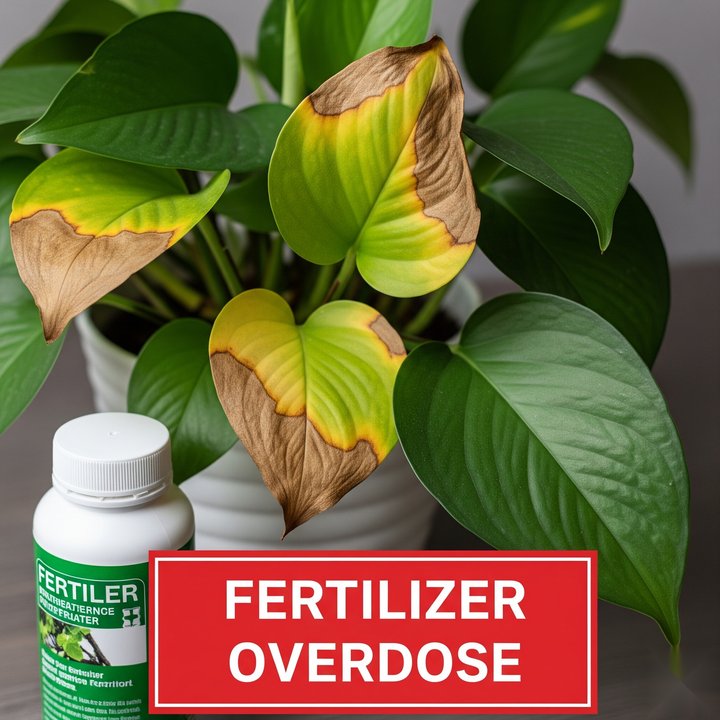
Even though pothos are forgiving, it’s easy to overdo it. Here are a few common mistakes:
- Over-fertilizing
- Leads to yellow tips, crispy leaves, or root burn.
- Fix: Flush soil with water (run a gallon through the pot) and skip fertilizer for a few weeks.
- Leads to yellow tips, crispy leaves, or root burn.
- Feeding in low light
- Plants grow slower in low light and need fewer nutrients.
- Adjust frequency based on where your pothos lives.
- Plants grow slower in low light and need fewer nutrients.
- Not watering after fertilizing
- Dry soil + fertilizer = root burn.
- Always water first, then apply liquid feed.
- Dry soil + fertilizer = root burn.
- Fertilizing in winter
- Pothos rest during winter. Too much food = stress.
- Either skip or feed once every 6–8 weeks at low strength.
- Pothos rest during winter. Too much food = stress.
How to Apply Fertilizer (Step-by-Step)
- Choose your fertilizer (liquid or slow-release).
- Dilute to ½ or ¼ strength unless otherwise stated.
- Water the plant thoroughly first.
- Add fertilizer to your watering can and apply evenly around the soil.
- Let it drain—don’t leave the plant sitting in water.
Boost Growth with These Extra Tips
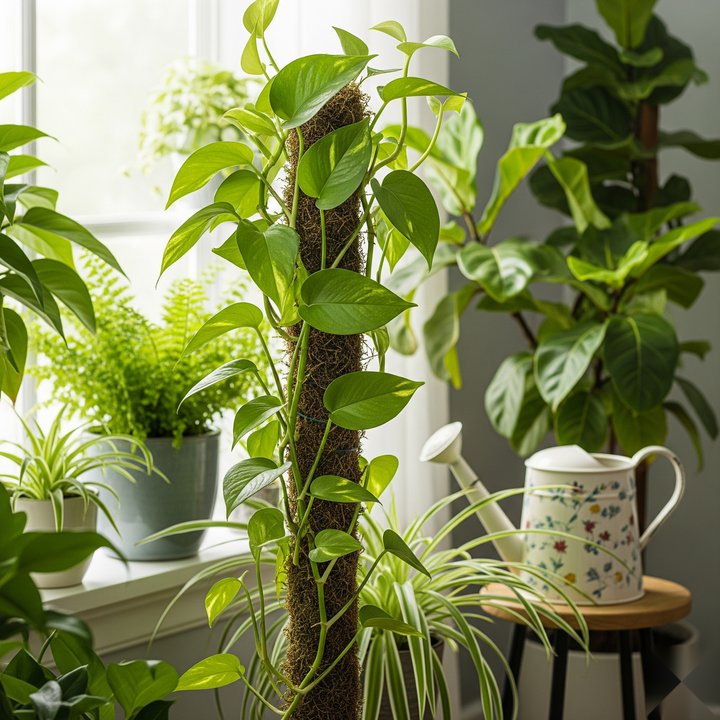
Fertilizer isn’t the only way to speed up pothos growth. Combine it with these care tips for lush, trailing vines:
- Bright, indirect light is key. The more light (without sunburn), the faster they grow.
- Use well-draining potting mix to avoid soggy roots.
- Prune regularly to encourage bushier growth.
- Repot every 1–2 years to refresh nutrients and give roots space.
- Rotate the plant monthly for even light exposure.
Epsom Salt and Pothos: Yay or Nay?
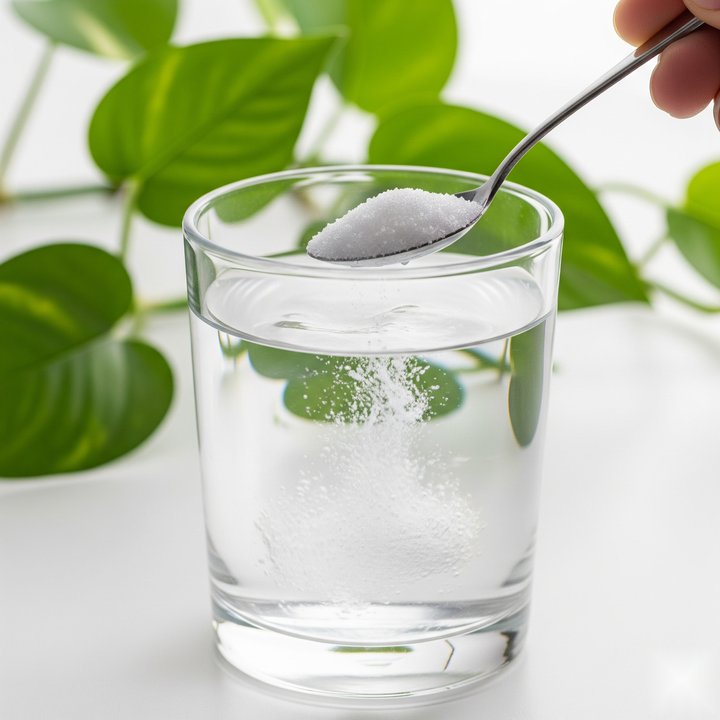
Some people swear by Epsom salt (magnesium sulfate) to boost growth. While pothos can benefit from magnesium, only use it if your plant shows signs of deficiency (yellow between leaf veins). It’s not a miracle grower but can help if used occasionally—like 1 tablespoon per gallon of water every month.
Encouragement for New Plant Parents
Don’t stress too much about the perfect fertilizer routine. Pothos are super forgiving, and it’s better to underfeed than overfeed. Start with a gentle routine and observe how your plant reacts. Once you’ve got the basics, you’ll find your rhythm—and your pothos will reward you with lush, trailing vines.
My very first pothos sat on a shelf for months without fertilizer. The moment I started feeding it monthly with diluted liquid food, it doubled in size. It was honestly so satisfying to see those new leaves unfurl!
FAQ – Pothos Fertilizer Questions (People Also Ask)
Q: Which fertilizer is best for pothos?
A: A balanced houseplant fertilizer like 10-10-10 or 20-20-20 works best. Liquid fertilizers are great for beginners.
Q: How can I make my pothos grow faster?
A: Combine regular fertilizing with bright indirect light, proper watering, and pruning. Also, give them a bigger pot if rootbound.
Q: Can I use Epsom salt on pothos?
A: Yes, occasionally and in small amounts (1 tbsp per gallon) if you suspect a magnesium deficiency.
Q: Can too much fertilizer harm my pothos?
A: Yes. Over-fertilizing can cause leaf tip burn, yellowing, or root damage. Always start with diluted strength.
Q: What happens if I never fertilize my pothos?
A: It will still grow, but slowly. Leaves may be smaller and color might fade over time. Fertilizing keeps your plant looking vibrant and healthy.
Final Thoughts
Feeding your pothos the right way doesn’t need to be complicated. Stick to a gentle routine, watch your plant’s response, and don’t be afraid to adjust. Over time, you’ll get to know what your plant loves best—and you’ll be amazed at how fast those vines can grow!
Got any specific questions about your pothos or want to troubleshoot a fertilizer issue? Drop a comment—I’d love to help.
Happy planting!

